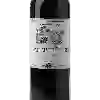
Winery Charvet Jean-PaulMorgon Cru De Beaujolais
In the mouth this red wine is a with a nice freshness.
This wine generally goes well with pork, poultry or veal.
Taste structure of the Morgon Cru De Beaujolais from the Winery Charvet Jean-Paul
Light | Bold | |
Smooth | Tannic | |
Dry | Sweet | |
Soft | Acidic |
In the mouth the Morgon Cru De Beaujolais of Winery Charvet Jean-Paul in the region of Beaujolais is a with a nice freshness.
Food and wine pairings with Morgon Cru De Beaujolais
Pairings that work perfectly with Morgon Cru De Beaujolais
Original food and wine pairings with Morgon Cru De Beaujolais
The Morgon Cru De Beaujolais of Winery Charvet Jean-Paul matches generally quite well with dishes of pasta, veal or pork such as recipes of tuscan pastachute, escalope cordon bleu or rice with sausage meat and tomatoes.
Details and technical informations about Winery Charvet Jean-Paul's Morgon Cru De Beaujolais.
Discover the grape variety: Pinot noir
Pinot noir is an important red grape variety in Burgundy and Champagne, and its reputation is well known! Great wines such as the Domaine de la Romanée Conti elaborate their wines from this famous grape variety, and make it a great variety. When properly vinified, pinot noit produces red wines of great finesse, with a wide range of aromas depending on its advancement (fruit, undergrowth, leather). it is also the only red grape variety authorized in Alsace. Pinot Noir is not easily cultivated beyond our borders, although it has enjoyed some success in Oregon, the United States, Australia and New Zealand.
Informations about the Winery Charvet Jean-Paul
The Winery Charvet Jean-Paul is one of of the world's greatest estates. It offers 4 wines for sale in the of Beaujolais to come and discover on site or to buy online.
The wine region of Beaujolais
Beaujolais is an important wine region in eastern France, famous for its vibrant, Fruity red wines made from Gamay. It is located immediately South of Burgundy, of which it is sometimes considered a Part, although it is in the administrative region of Rhône. The extensive plantings of Gamay in this region make Beaujolais one of the few regions in the world that is so concentrated on a single Grape variety. Pinot Noir is used in small quantities in red and rosé wines, but in the name of regional identity, it is being phased out and will only be allowed until the 2015 harvest.
The word of the wine: Nebuchadnezzar
Bottle with a capacity of 15 litres.












